If you follow my Facebook page, then you know I’ve just returned from leading a photo safari to Africa. That marks my eighth wildlife workshop trip to Africa, and the sixth to Tanzania and the Serengeti. When people hear how many times I’ve been there, they inevitably ask, “Why go back to the same place over and over?” Good question, and here’s what I tell them…
Travel can be hard. That’s especially true of international travel. Passports, visas, multiple flights, often on different airlines, strange airports, confusing airports, different languages, different money, time change and more. There are two airline partnerships that serve JRO (Kilimanjaro International Airport), Star Alliance and SkyTeam. I know that because I’ve used them both, and know where they fly through
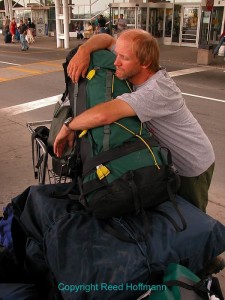
Flying around the world is no picnic, so knowing what to do when you get there makes it a lot easier. Photo copyright Reed Hoffmann.
and what’s involved. I know what to tell you to help you breeze through Customs and Immigration in Tanzania, and how to get through that airport on arrival. Travel is stressful, so I want to be able to lessen that stress for my clients by telling them what to expect. Which leads me to…
Some photographers use workshops to get other people to pay for their vacations to new places. That’s wrong. The client is the customer; the trip should be about them. As a trip leader, you need to make sure they have the best possible experience. That’s easier if you’ve been on that trip before. Sure, I love seeing new places, and each year work on adding new destinations to my list of workshops. But those new destinations are more stressful for me, and require much more prep work. I have to find out what to expect and be able to help the group prepare for that. Even if I’ve tried to learn everything I can about a new place, I won’t really know it until after I’ve been there. That was the case last fall when I took people to Bhutan for the first time. But even then I wasn’t going blind. It was built off a previous adventure trip that Pack Paddle Ski (who I teach some workshops for) had done, so we had a great guide service arranged (that they had used before) and good knowledge of what we’d see and do. The same goes for Mentor Series trips. New workshops that I teach for them have usually been scouted ahead of time or are created from an instructor’s previous trip(s) to that area.
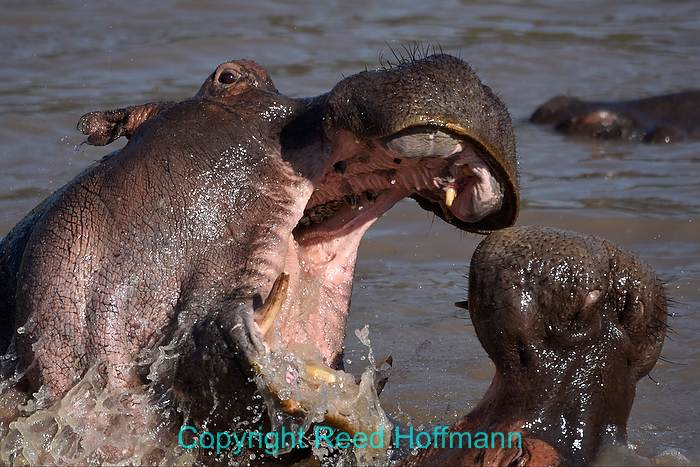
One of my favorite places to visit in the Serengeti is the Hippo Pool, and knowing to be there early in the day means you’ll see more action. Nikon D7200, Aperture Priority, ISO 200, 1/1250 at f/6.3, EV -0.7, Nikon 80-400mm f/4.5-5.4 lens at 400mm. Photo copyright Reed Hoffmann.
On any international trip, you really need a good local guide. They know the language, culture, history and all the other things that make for a richer, more interesting and less stressful trip. If there are problems, they know how to deal with them. For a wildlife trip, this is more important than ever. I’ve used the same guide in the Serengeti for every trip, which means I have someone I trust and share a history with. Not only does Yusuph have great English skills, but he knows how I want to work with my group. He also arranges the drivers for us (several of whom we use over and over), to make sure they’re going to give us a great experience. All of them are licensed, well educated, and have not just great knowledge of the area and the wildlife, but love what they do. That knowledge is critical, as they know where to take us, and when, for the best photo opportunities.
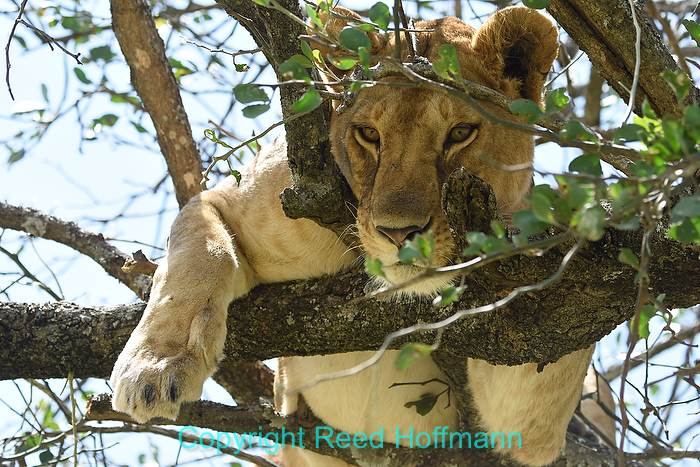
You rarely find lions in trees in the Serengeti, because there are plenty of big rocks for them to sit atop. But this time the guides said they’d been seeing that a lot recently. And so found one for us. Nikon D7200, Aperture Priority, ISO 200, 1/250 at f/6.3, EV 0.0, Nikon 80-400mm f/4.5-5.6 lens at 155mm. Photo copyright Reed Hoffmann.
When I do a new trip and it works out well, you can bet I’ll return again. And I’ll tweak that trip to make it even better. In Tanzania, that begins with where we go and when. For instance, on our first day out, I’ve learned it’s best if we spend the afternoon at Manyara National Park. Most of the animals we see there, we’ll see again, so it’s a good warm-up for the rest of the trip. People can get comfortable working from the trucks, and I spend a lot of time answering basic questions on camera settings, from exposure to autofocus. That makes it a low-stress atmosphere to get comfortable with the gear and how we’ll work for the rest of the trip. And having been there before, we stay at certain places at certain times, based on location of animals and quality of the lodges. Some of those lodges are simply amazing!
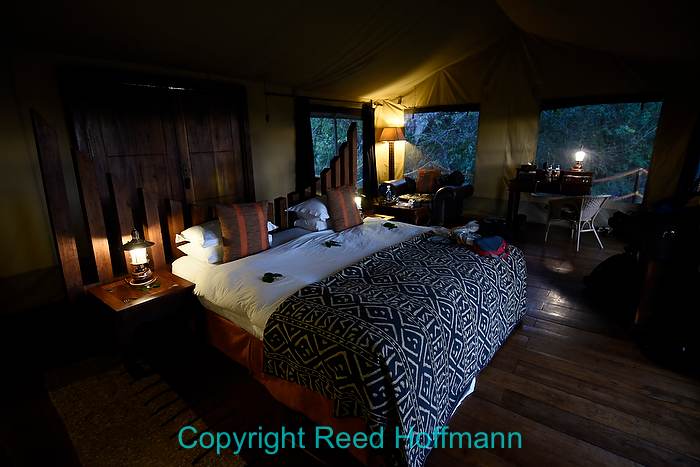
People often worry when they hear we’re spending two nights at a “tented camp.” But I know the treat that’s awaiting them when we get there. These are like no tents you’ve ever stayed in. Nikon D750, Aperture Priority, ISO 2000, 1/25 at f/3.5, EV -1.0, Nikon 18-35mm f/3.5-4.5 lens at 18mm. Photo copyright Reed Hoffmann.
Serengeti is home to the largest migration of wildebeest and zebra (nearly two million total) in the world. It’s a great circular route that encompasses the Serengeti and a small part of southern Kenya (called the Maasai Mara). The animals do that because the Serengeti contains vast open plains, and they follow the growing season of the grasses, which takes them in a large circular path. Add to that the large resident animal populations (not all migrate) and the long history of conservation in Tanzania, and you have the perfect recipe for a lot of great animal sightings and experiences. What I tell people is, if you want to see lots of animals, go to the Serengeti and witness the migration.
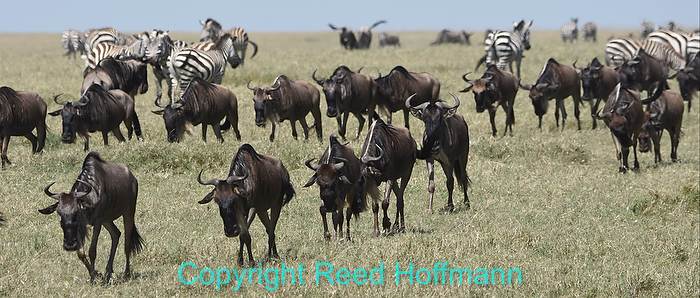
Being in the middle of the migration is an awe-inspiring experience. You’re surrounded by animals for as far as the eye can see. Nikon D7200, Aperture Priority, ISO 200, 1/1000 at f/6.3, EV -0.3, Nikon 80-400mm f/4.5-5.6 lens at 240mm. Photo copyright Reed Hoffmann.
I’m far from an expert on animal behavior. But having been there so many times, and listening to our great guides, I’ve learned a lot. Which means that I often know what to expect from the animals in various situations. And that can lead to better pictures. I work closely with the guides to try to arrange the best combination of shooting positions (you shoot from a truck, so where the truck parks is very important) in places where we expect to see good activity.
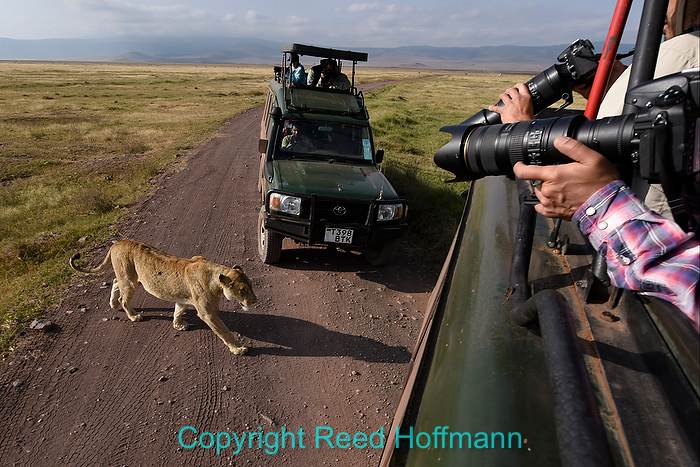
Good guides don’t just help you find animals, they try to get the trucks in the best spots to photograph them. Nikon D750, Aperture Priority, ISO 200, 1/250 at f/11, EV -0.7, Nikon 18-35mm f/3.5-5.6 lens at 20mm. Photo copyright Reed Hoffmann.
We spend a week on safari, so after a couple of days you’ve likely made all the classic pictures. Then what? Keep shooting the same thing over and over? No. For the first two days, we stop for just about every animal we see. But after that, we become much more selective. Now we’re looking for better light and access, and I make suggestions where we stop, and for how long, based on that. There’s also a tendency to just shoot close-ups of the animals, and that’s fine, to a point. But I remind everyone that it’s just as important to make the wider shots, that really show where you are. After all, you can get close-ups at zoos (and the animals will be cleaner and not covered by flies). So those wider shots give context, and help the viewer get a better feel for where you are and what it’s like there. Plus, once we’ve got the classic shots, then we can start taking chances, and look for less obvious photos. That means being on the lookout for animal interactions, either between the same species or different ones. We also look for opportunities to create blur by panning. In other words, we go beyond the obvious. And in photography, that’s a good thing.
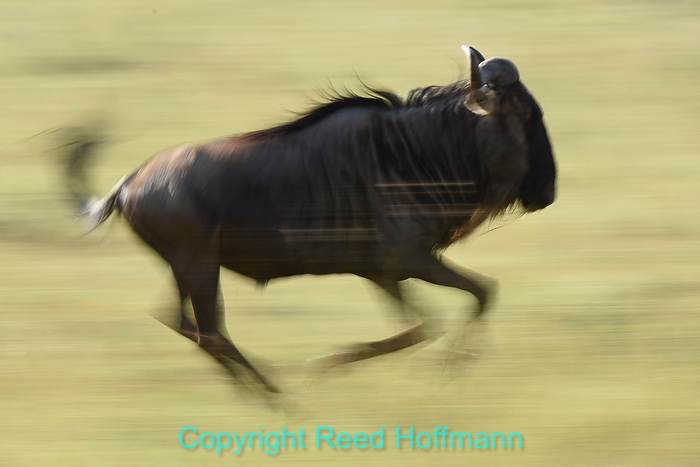
This is a photo I love to make, and try to make sure every person with me makes it too. Combining a slow shutter speed with following the motion creates this classic “panning” shot. And with the wildebeest, it always reminds me of cave paintings. D7200, Aperture Priority, ISO 100, 1/25 at f/18, EV -1.0, Nikon 80-400mm f/4.5-5.6 lens at 350mm. Photo copyright Reed Hoffmann.
It’s also important to remember that there’s more to the Serengeti than just wildlife. We always make a point to stop at Oldupai Gorge (yes, that’s the correct spelling), where some of the earliest evidence of man on earth was found. They have a nice, small museum there, and do a good introductory talk about the history of research in the area. My favorite stop there is the plaster cast of fossilized human footprints from over three-million years ago.
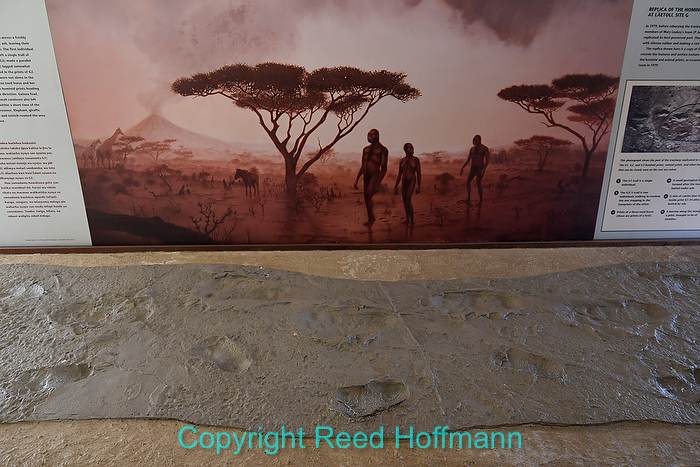
I marvel every time I see this display. It’s a plaster cast of footprints from over three million years ago. Nikon D750, Aperture Priority, ISO 640, 1/25 at f/5, EV -0.3, Nikon 18-35mm f/3.5-4.5 lens at 18mm. Photo copyright Reed Hoffmann.
We also visit a Maasai village (or “boma”), and spend a couple of hours learning about this group of nomads. Their life centers around herds of cattle and goats, and they move with their animals, relocating several times a year. We’re welcomed with songs and dances, then pair off with some of the men for tours of their huts and an explanation of how they live. It’s a great opportunity to see a way of life vastly different from our own, and not surprisingly, is full of great photo opportunities.
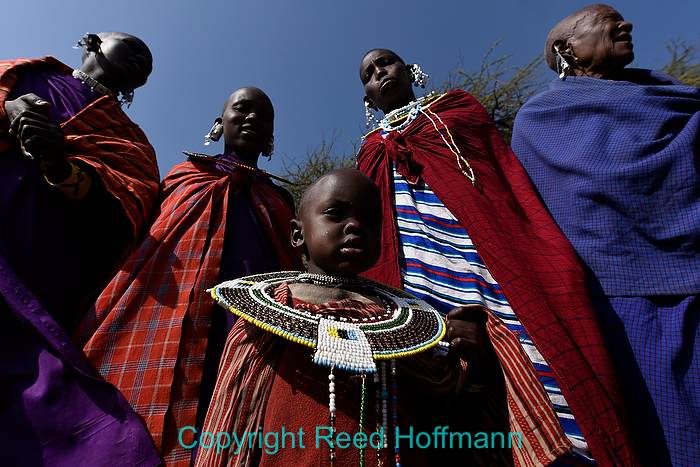
I find the Maasai people fascinating. This was during the welcoming ceremony, and I put the camera down low to show the little girl surrounded by the women of her village. Nikon D750, Aperture Priority, ISO 200, 1/800 at f/7.1, EV -0.7, Nikon 18-35mm f/3.5-5.6 lens at 18mm. Photo copyright Reed Hoffmann.
Finally, I wouldn’t return again and again if it wasn’t a magical place. Every trip I’ve led, we’ve had some amazing and unique experiences. It’s an adventure you’ll remember the rest of your life, and you’ll return home with some amazing photos from that adventure. To paraphrase an old saying, “You can leave the Serengeti, but it will never leave you.”
(If you’d like to go with me to the Serengeti, send an email to reed@reedhoffmann.com. I’m in the process of planning another trip there in June of 2016, and will let you know when the details are posted)

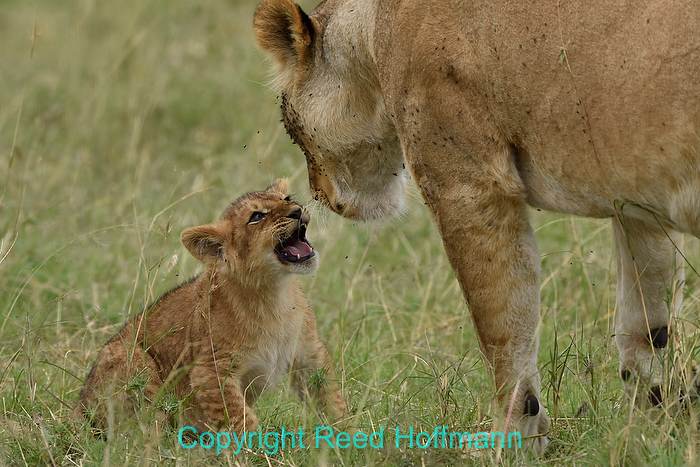
Good afternoon. Many thanks 🙂 Great article